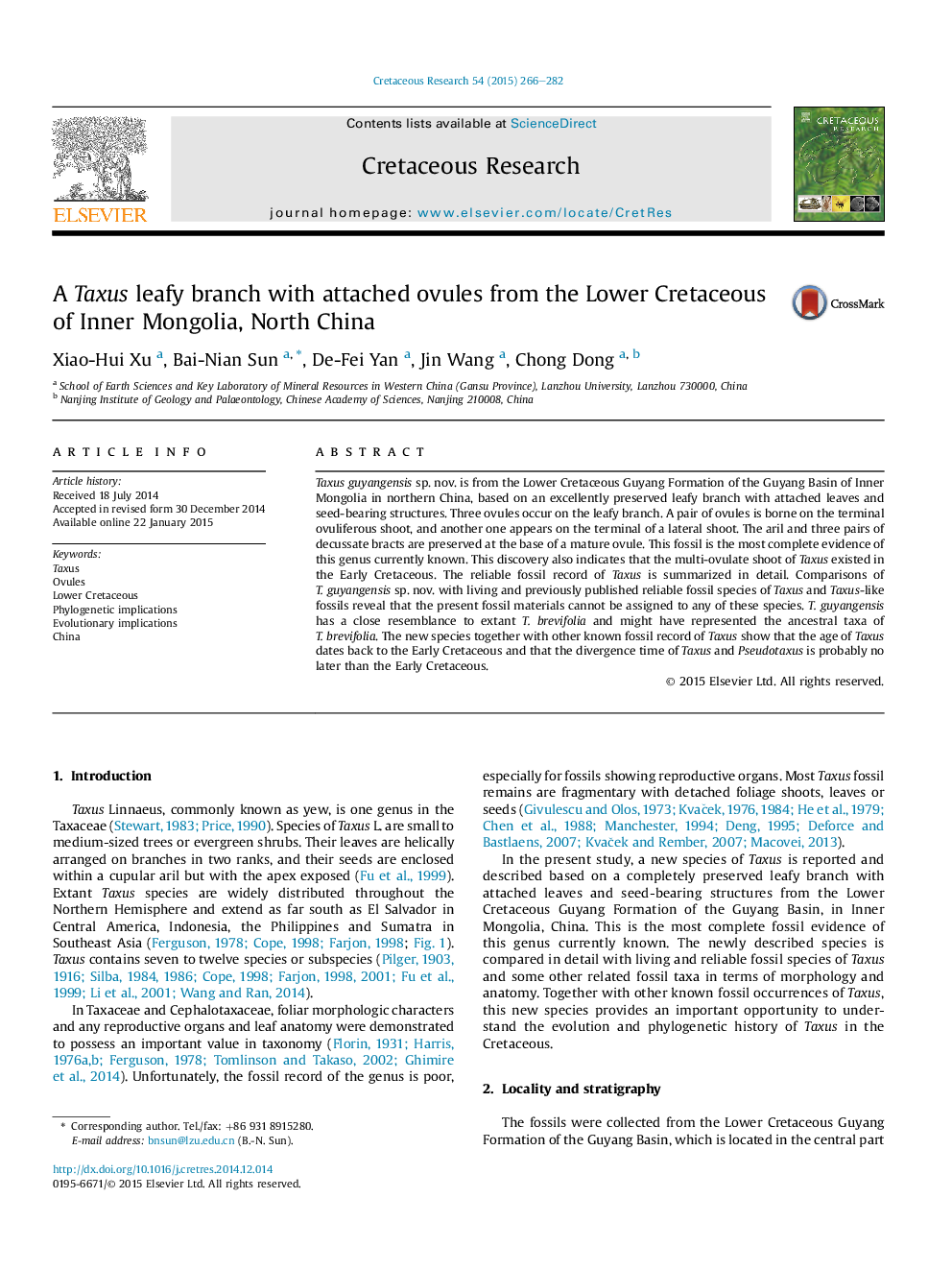| Article ID | Journal | Published Year | Pages | File Type |
|---|---|---|---|---|
| 4747107 | Cretaceous Research | 2015 | 17 Pages |
•Taxus guyangensis sp. nov. is described from the Lower Cretaceous in North China.•Two ovular shoots and three attached ovules are preserved on a long leafy branch.•Multi-ovulate shoot of Taxus existed in the Early Cretaceous.•The new species might have represented the ancestral taxa of T. brevifolia.•The age of Taxus dates back to the Early Cretaceous.
Taxus guyangensis sp. nov. is from the Lower Cretaceous Guyang Formation of the Guyang Basin of Inner Mongolia in northern China, based on an excellently preserved leafy branch with attached leaves and seed-bearing structures. Three ovules occur on the leafy branch. A pair of ovules is borne on the terminal ovuliferous shoot, and another one appears on the terminal of a lateral shoot. The aril and three pairs of decussate bracts are preserved at the base of a mature ovule. This fossil is the most complete evidence of this genus currently known. This discovery also indicates that the multi-ovulate shoot of Taxus existed in the Early Cretaceous. The reliable fossil record of Taxus is summarized in detail. Comparisons of T. guyangensis sp. nov. with living and previously published reliable fossil species of Taxus and Taxus-like fossils reveal that the present fossil materials cannot be assigned to any of these species. T. guyangensis has a close resemblance to extant T. brevifolia and might have represented the ancestral taxa of T. brevifolia. The new species together with other known fossil record of Taxus show that the age of Taxus dates back to the Early Cretaceous and that the divergence time of Taxus and Pseudotaxus is probably no later than the Early Cretaceous.
